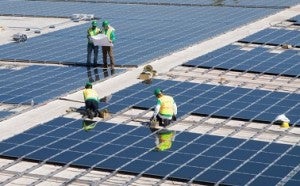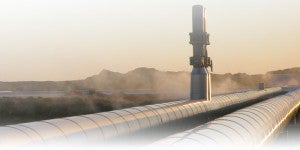 It’s report card time for air quality in the U.S. and, unfortunately, several western states are getting grades of “needs improvement.” That’s the take-away from the American Lung Association’s (ALA) annual “State of the Air” report released today. When it comes to unhealthy ozone pollution (commonly referred to as “smog”), several western states are simply not making the grade.
It’s report card time for air quality in the U.S. and, unfortunately, several western states are getting grades of “needs improvement.” That’s the take-away from the American Lung Association’s (ALA) annual “State of the Air” report released today. When it comes to unhealthy ozone pollution (commonly referred to as “smog”), several western states are simply not making the grade.
Once mainly seen in major urban areas, smog pollution is now becoming more and more of an issue in the rural mountain west. This is bad news for local residents as smog can cause serious health impacts like aggravated asthma, chronic bronchitis, and heart attacks. At times, areas like the Upper Green River Basin in Wyoming have experienced smog levels that rival Los Angeles.
One of the main culprits? Air pollution from oil and gas development. Ozone pollution is created by an interaction between two different sorts of air pollutants, oxides of nitrogen and volatile organic compounds (VOCs). Oil and gas development provides a significant source of both of these air contaminants across many parts of the West. Read More

 Long familiar in major urban areas, smog – what we experts call “ground-level ozone” pollution – is quickly becoming a serious problem in the rural mountain west, thanks to rapid expansion in oil and gas development. Smog can cause serious health impacts like aggravated asthma, chronic bronchitis, heart attacks, and even premature death. In areas like the
Long familiar in major urban areas, smog – what we experts call “ground-level ozone” pollution – is quickly becoming a serious problem in the rural mountain west, thanks to rapid expansion in oil and gas development. Smog can cause serious health impacts like aggravated asthma, chronic bronchitis, heart attacks, and even premature death. In areas like the  As the year draws to a close, I’m grateful for three climate breakthroughs from 2014 that give me hope that we can still turn the corner toward a stable climate before it’s too late.
As the year draws to a close, I’m grateful for three climate breakthroughs from 2014 that give me hope that we can still turn the corner toward a stable climate before it’s too late.
